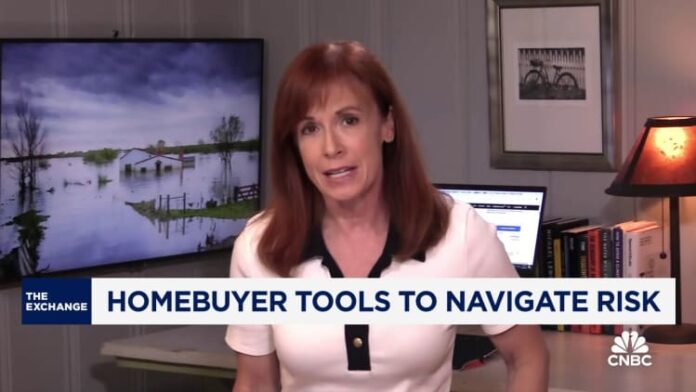Insured losses from Hurricane Helene are now estimated at over $6 billion, but uninsured losses are far greater. That's because the vast majority of homes affected by the storm, particularly in hard-hit North Carolina, did not have flood insurance.
New risk assessment technologies are expected to help change this in the future.
Most homeowners in North Carolina do not have flood insurance because they are not in Federal Emergency Management Agency-designated flood zones. Flood insurance is required for government-backed mortgages in designated areas.
Only 4% of North Carolina homes are in a FEMA flood zone. But climate risk firm First Street, which incorporates climate change impacts into its property risk assessments, shows that nearly 12% of homes in the state are at risk of flooding.
First Street has just released a set of climate risk data for every property listed for sale on Zillow.
“Climate risks are now a critical factor in home buying decisions,” said Skylar Olsen, chief economist at Zillow, in a press release. “We provide buyers and sellers with clear, property-specific climate data so they can make informed decisions. As concerns about flooding, extreme temperatures, and wildfires increase, this tool also helps brokers educate their clients when discussing climate risks, insurance, etc. and long-term affordability.”
A home on the Broad River after Hurricane Helene on October 1, 2024 in Bat Cave, North Carolina.
Sean Rayford | Getty Images
Every listing for sale on Zillow now displays First Street risk ratings for flood, fire, wind, air and heat. They also show the same risk percentages estimated for 15 and 30 years in the future – the standard terms for fixed-rate mortgages.
Properties with some risk are often found to increase in risk over time as First Street considers the impacts of climate change. This is particularly true for the risk of flooding, as climate change increases the intensity of precipitation even during smaller storms.
The data also includes a recommendation on whether the homeowner should purchase flood insurance and a link to the First Street website to help estimate insurance costs.
“Many people think that they are safe from flooding if they are not in a FEMA flood zone, and that is definitely not true. Heavy rains have the potential to affect many, many people across the country, and there are no advisories from the FEMA flood zone.” “Be aware that this poses a risk to you,” said Ed Kearns, chief science officer at First Street. “We have created these new flood maps that take this into account and allow consumers to make an informed decision about whether they need flood insurance.”
According to a Zillow survey, more than 80% of buyers now consider climate risk when purchasing a home. Respondents cited flood risk as their top concern, followed by fire.
A Zillow analysis of listings in August found that more homes nationwide were at greater climate risk than homes listed for sale five years ago. This applies to all five climate risk categories, according to the analysis. According to data from Zillow and First Street, 16.7% of new listings in August are at high risk of wildfires and 12.8% are at high risk of flooding.
As more consumers use these climate metrics to make purchasing decisions, the impact on home value will certainly increase. The cost of insurance is already factored into property prices, and as both the cost and need for insurance increase, property values in the hardest hit areas will decline.
“I think the most direct impact of home valuations quantifying risk will be that there may be a direct impact on property values, but a large part of that will be covered by the amount of insurance needed to cover that “Home,” Kearns added.
















